Bún mắm, or Vietnamese fermented fish noodle soup, is a unique dish that the people in Vietnam adore. Infused with the umaminess and intense aroma of fermented fish, this delicacy has a signature flavor that you just can’t get enough of once you’re hooked.
Truth be told, bún mắm is an acquired taste. Some people absolutely love it, while others might find it too overwhelming. Nevertheless, I strongly encourage you to give this dish a try and see for yourself.
No more beating around the bush! Let’s jump right into today’s recipe and learn how to make the most authentic Vietnamese fermented fish noodle soup.
Bún Mắm 101 – A Gem In Vietnamese Cuisine
“Bún mắm” is a delicacy that originated in the Southwestern regions (or Mekong River Delta) of Vietnam. It consists of fermented fish broth, usually made from moustached danio or snakeskin gourami, other seafood, and crispy pork roast.
The locals simmer the fermented fish until it fully dissolves, then strain it to make the broth. This cooking process results in a highly aromatic stock packed with pungent seafood flavor. To complete the dish, people in Vietnam enjoy it with a wide array of herbs and vegetables.
Initially, bún mắm was an invention of Cambodian cuisine, which the Vietnamese adapted. Regardless, it has long been a favorite dish of countless Vietnamese people, especially during and after the 1970s, when this fragrant noodle soup came to Saigon.
What Are Necessary Tools for Bún Mắm?
If you’re worried that this dish might require some sort of fancy tool, rest assured. Here are the simple tools that you need to make today’s recipe.
What Ingredients Are Used to Make Bún Mắm?
You’ll need to make a trip to the nearest Asian grocery store in order to gather the ingredients for this recipe.
What Are the Cooking Instructions for Bún Mắm?
Vietnamese fermented fish noodle soup is not hard to make at all. Follow these steps closely, and you’ll have a delicious meal in no time!
Step 1: Wash the Ingredients
Clean the shrimp’s heads and devein them. You can skip this step if you don’t want to add the shrimp’s boiling water to your broth.
Chop the snakehead fish into smaller pieces. Wash the pork belly, bones, squid, and vegetables thoroughly.
Step 2: Prepare the Ingredients
Cut the pork roast into bite-sized pieces (about 0.8-inch or 2-cm thick) and place them on a plate.
Use a meat pounder to crush the lemongrass, then mince them. Remember to keep the upper parts of the stalks for later use.
Mince the shallots, garlic, and half an onion. Cut the chives, pineapple, sponge gourd, and white radish into pieces.
Use the tip of a spoon or a teaspoon to remove the seeds/cores of the cow horn peppers and okra.
Cut the pork belly into bite-sized pieces, about 0.4 to 0.8-inch (1 to 2-cm) thick.
Make thin, cross-hatch pattern slits on the sides of the squid, then slice it to create a more attractive shape when cooked.
Slice the eggplant in half and cut it into bite-sized slices. Soak them in salted water to prevent them from browning.
Step 3: Cook the Fermented Fish Broth
Pour 1 liter of water and 2 types of fermented fish into a small pot. Add 2 shallots and 3 lemongrass stalks. Simmer for 10 to 15 minutes over low heat until the fish falls apart.
Once the fish has completely disintegrated, use a sieve/strainer to filter out the bones.
Step 4: Make the Broth
Add 2 teaspoons of salt into a pot of boiling water and blanch the pork bones for 2 to 3 minutes. Then,transfer the bones to a cold water bath and wash thoroughly to remove debris and odor. This step will help you achieve a clear and aromatic broth.
Next, pour 1 liter of water into a pot together with a few shallots and 3 stalks of lemongrass. Season with:
Add the snakehead fish to the pot and cook for 10 to 15 minutes over medium heat. After that, remove the fish from the pot and set aside.
Add the shrimp and squid to the same pot. Cook the seafood for 5 to 10 minutes. Then, transfer them to a cold water bath to retain their crispness.
Add 2.5 liters of water, pork bones, half an onion, sugar canes, sponge gourd, white radish, pineapple, and the seafood stock into a pot and stew for 1 hour and 30 minutes over medium heat.
After 30 minutes, pour in the fermented fish broth and continue stewing over low heat. Remember to skim the broth frequently to make it clearer.
Step 5: Stir Fry the Pork Belly
Heat some cooking oil in a pan and fry the minced lemongrass, shallots, and minced garlic until fragrant. Add the pork belly and stir fry for 10 minutes to make the meat firmer and more aromatic.
Step 6: Make the Stuffed Okra And Peppers
Season the fish paste with:
Mix until well combined. Use a teaspoon or a small spoon to stuff the fish paste mixture into the okra and peppers.
Pour some olive oil into a heated pan and fry the okra and peppers until fully cooked on all sides. Transfer them to a plate lined with paper towels to absorb the excess oil.
Step 7: Finishing the Dish
After stewing the broth for 1 hour, remove the vegetables but keep the pork bones. Add the stir-fried pork belly and continue cooking over low heat for 15 to 20 minutes.
Meanwhile, mix the following ingredients in a small bowl:
Stir until combined, then filter out the tamarind’s seeds.
Season the stock pot with:
Feel free to adjust to taste. Note that the fermented fish already has a high salt content. Add the eggplant to the pot and cook for another 5 minutes over low heat.
Next, blanch the noodles in boiling water with cooking oil to prevent them from sticking. Peel the shrimp, keeping the heads.
Step 8: Present the Dish
Arrange the roast pork, fish, squid, shrimp, okra, and peppers over the noodles. Fill the noodle bowl with the broth. Remember to include some eggplant slices and pork belly. Sprinkle some chives and ground peppers on top. Serve with herbs.
Handy Notes And Tips You Should Know
I know that there are quite many steps to follow, but don’t worry. Here are some useful tips to help make the cooking process of bún mắm easier.
The Tempting Taste of Bún Mắm Awaits
As I’ve mentioned earlier, bún mắm is not exactly a dish for the faint-hearted. However, if you’re a fan of pungent, flavorful dishes with unforgettable fragrant, I’m sure today’s recipe won’t let you down!
Have you tried bún before? Do you adore it or find it a bit too much? I’d love to know what you think about this Vietnamese delicacy in the comment section. If you enjoy today’s recipe, please press the like button and share it with other home cooks!
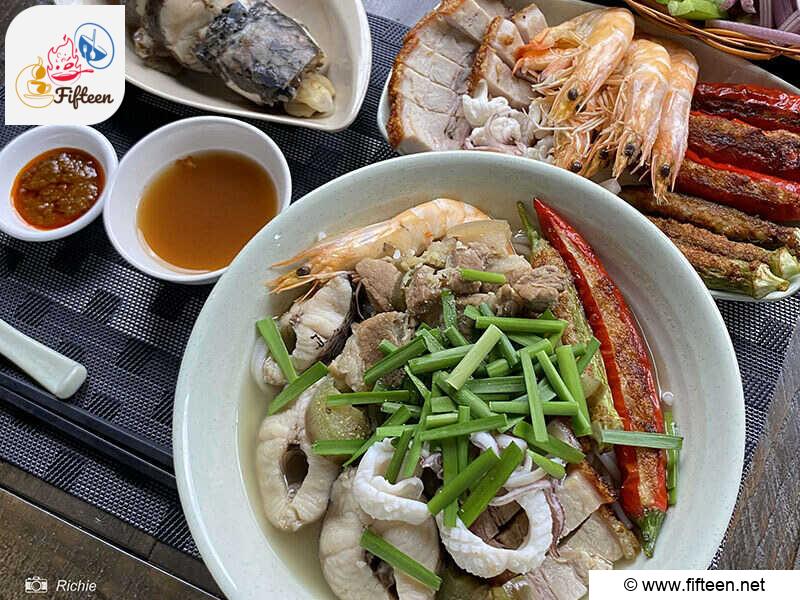
Bún Mắm Recipe (Vietnamese Fermented Fish Noodle Soup)
Equipment
- Pan
- Meat Pounder
- Ladle
- Slotted Spoon
- Sieve
- Tongs
- Knife
- Chopping Board
Ingredients
Main Ingredients
- 1.8 pounds snakehead fish
- 1.1 pounds pork bones
- 0.4 pound pork belly
- 0.4 pound squid
- 0.4 pound fresh shrimp
- 0.4 pound fermented moustached danio (mắm cá linh)
- 0.4 pound fermented snakeskin gourami (mắm cá sặc)
- 0.4 pound Chinese-style roast pork belly
- 0.2 pound featherback fish paste
- 0.2 pound shallot
- 0.1 pound garlic
- 4 cow horn peppers
- 4 okra
- Ginger
- Chives
- 0.25 pineapple
- 1 onion
- 1 white radish
- 1 small sponge gourd
- 1 eggplant
- 2 sugar canes
- 6 lemongrass stalks
Condiments and spices
- 0.15 pound rock sugar
- 50 milliliters fish sauce
- 4 teaspoons brown sugar
- 4 teaspoons soup powder
- 4 teaspoons salt
- Cooking oil
- Tamarind
For serving
- Yellow velvetleaf
- Water lily
- Common knotgrass
- Banana blossom, grated, optional
- Water spinach, grated, optional
- Mung bean sprouts, optional
- Perilla (shiso or beefsteak plant) leaves, optional
- Vietnamese balm, optional
- Thai basil, optional
- Wild mint, optional
- 1.1 pounds thick vermicelli noodles
For The Dipping Sauce
- 0.1 pound tamarind
- 75 milliliters high-quality fish sauce
- 4 teaspoons brown sugar
- 50 milliliters hot water
Instructions
- Clean the shrimp’s heads and devein them. Chop the snakehead fish into smaller pieces.
- Wash the pork belly, bones, squid, and vegetables carefully.
- Cut the pork roast into bite-sized pieces and arrange them on a plate. Crush the lemongrass stalks using a meat pounder, then mince them. Save the upper part of the stalks. Mince the shallots, garlic, and half an onion. Cut the chives, pineapple, sponge gourd, and white radish into pieces.Core and remove the seeds of the peppers and okra.
- Cut the pork belly into bite-sized pieces. Make thin, cross-hatch pattern slits on the sides of the squid, then slice them. Slice the eggplant in half and cut it into bite-sized pieces. Then, soak them in salted water.
- Pour water and the fermented fish into a small pot. Add shallots and half the amount of lemongrass stalks. Simmer for 10 to 15 minutes until the fish falls apart. Filter out the bones once the fish has disintegrated.
- Blanch the pork bones for 2 to 3 minutes in boiled salted water. Then, transfer the bones to a cold water bath and wash thoroughly to get rid of the debris and odor
- Next, pour water into a pot together with the snakehead fish, a few shallots, and the remaining lemongrass stalks. Season with brown sugar, soup powder, and salt. Cook the broth for 10 to 15 minutes over medium heat, then remove the fish and set aside. Add the shrimp and squid to the same pot, and cook for 5 to 10 minutes. Transfer them to a cold water bath.
- Add water, pork bones, half the onion, sugar canes, sponge gourd, white radish, pineapple, and the seafood stock into a pot. Stew for 1 hour and 30 minutes.After 30 minutes, pour in the fermented fish broth and continue stewing, skimming frequently.
- Heat some cooking oil in a pan and fry the minced lemongrass, shallots, and minced garlic until fragrant. Add the pork belly and stir fry for 10 minutes.
- Season the fish paste with pepper, brown sugar, cooking oil, and soup powder. Add minced onion and mix until combined. Stuff the fish paste mixture into the okra and peppers.
- Pour some olive oil into a heated pan and fry the okra and peppers until fully cooked on all sides. Transfer them to a paper towel lined plate to drain off the excess oil.
- After stewing the broth for 1 hour, remove the vegetables but keep the pork bones. Add the stir-fried pork belly and continue cooking over low heat for 15 to 20 minutes.
- Meanwhile, mix hot water, fish sauce, and sugar with tamarind in a bowl. Stir until well-combined, then remove the tamarind’s seeds.
- Season the stock pot with rock sugar, soup powder, and brown sugar, and adjust to taste. Add the eggplant to the pot and cook for another 5 minutes over low heat. Blanch the noodles in boiling water with cooking oil. Peel the shrimp, keeping the heads.
- Arrange the roast pork, fish, squid, shrimp, okra, peppers, eggplant slices, and pork belly over the noodles. Pour in the broth. Sprinkle chives and ground peppers on top. Serve with herbs.
Video
Notes
- Fermented fish already has a high salt content, so don’t add too many extra spices.
- You can try making this dish without fermented fish. The dish will taste different, but the flavor is still delicious.
- Add the accompanying herbs to the broth while it’s still hot.
- Keep the pepper seeds if you want more spiciness.
- If you can’t find snakehead fish, you can substitute it with other white, freshwater fish.
- The above cooking time is suitable for making 5 servings.
- Serve your noodle soup with chili sauce or Shacha sauce for more flavors.


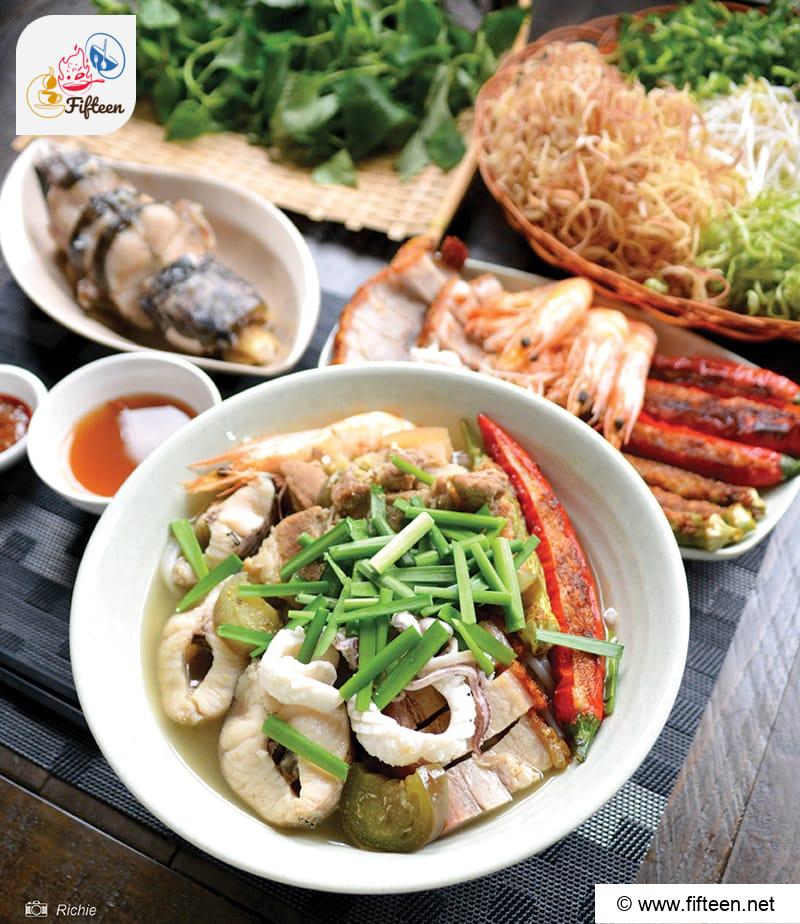
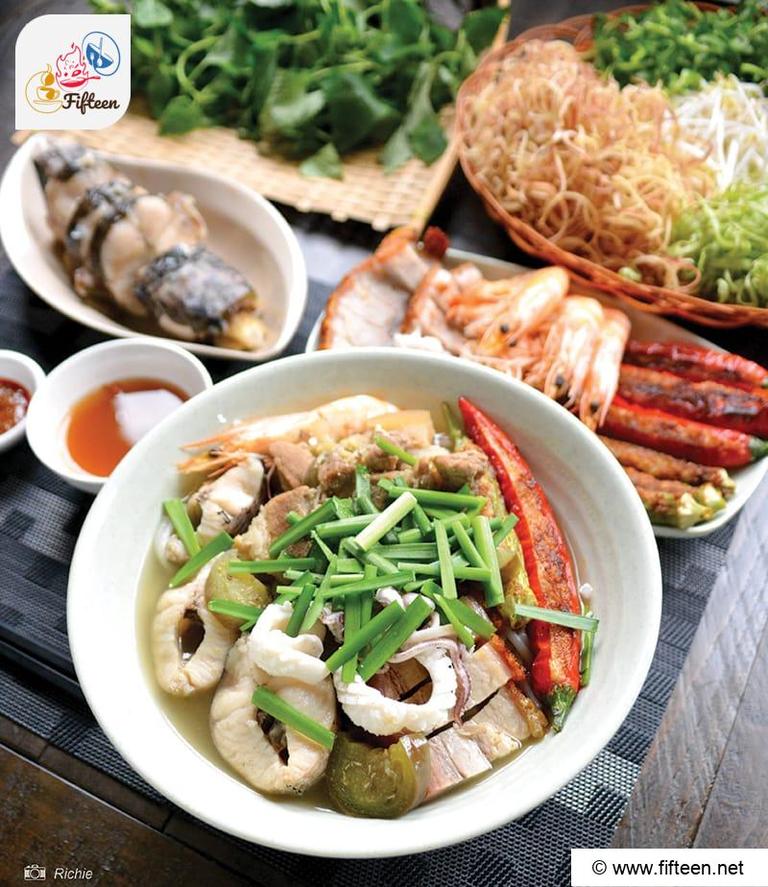
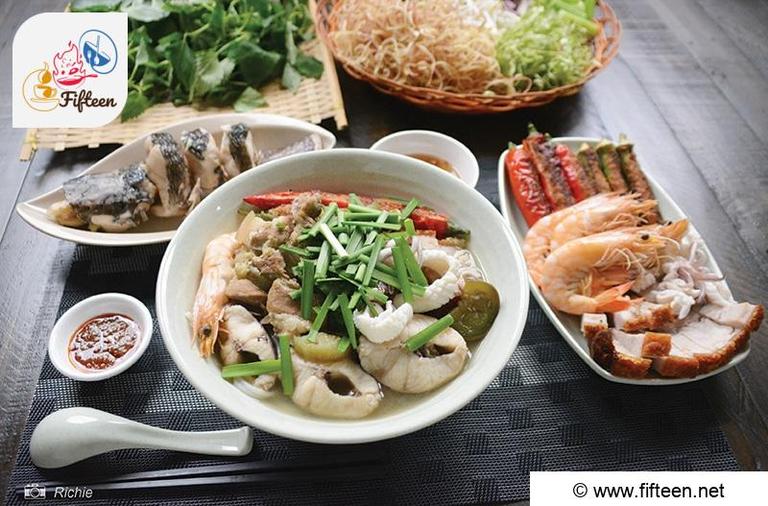
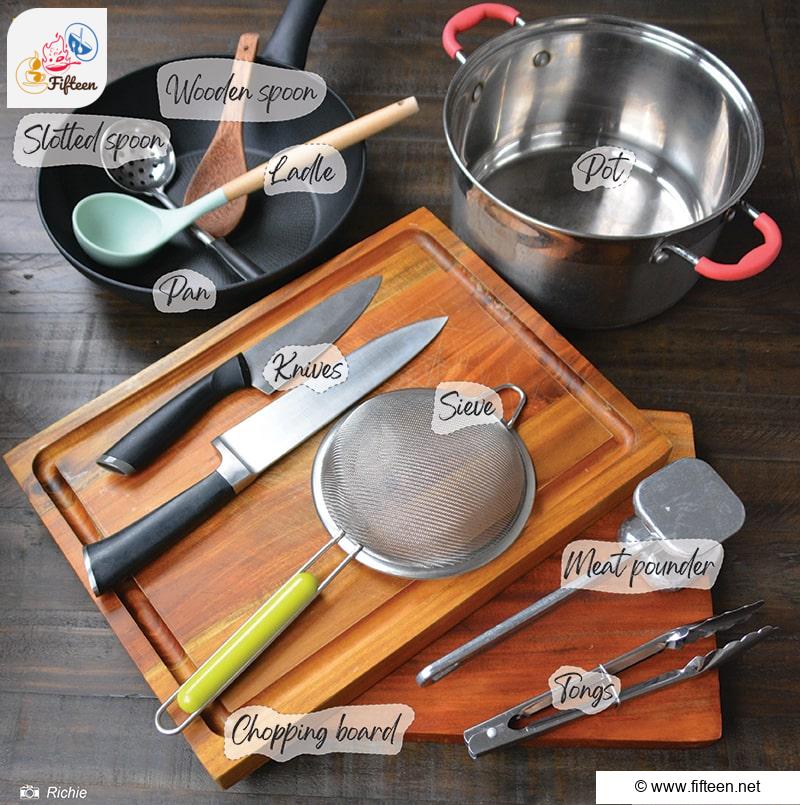
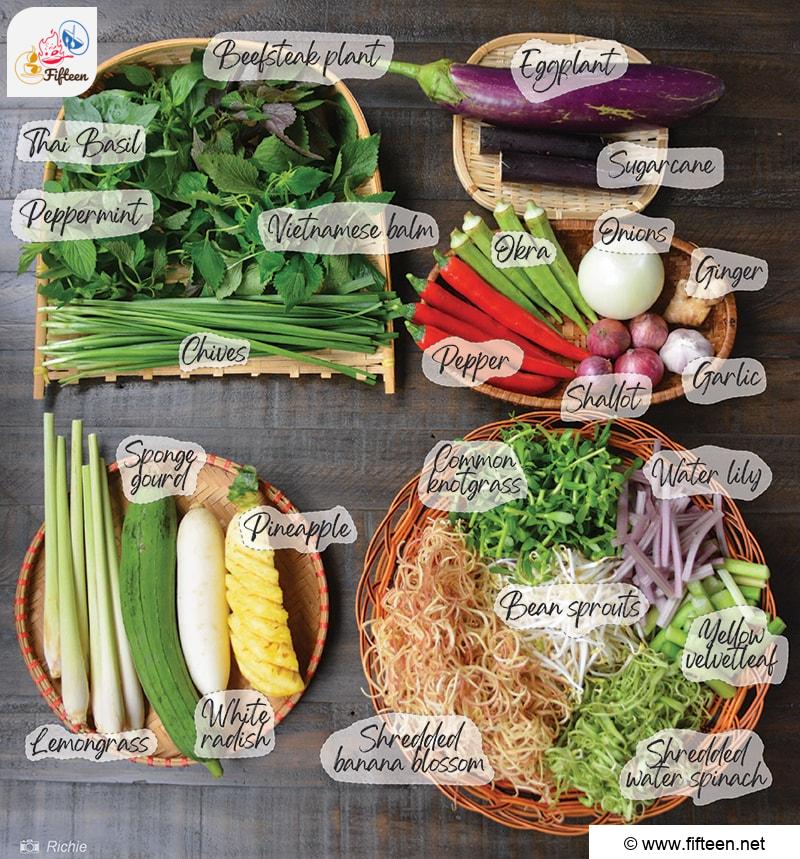
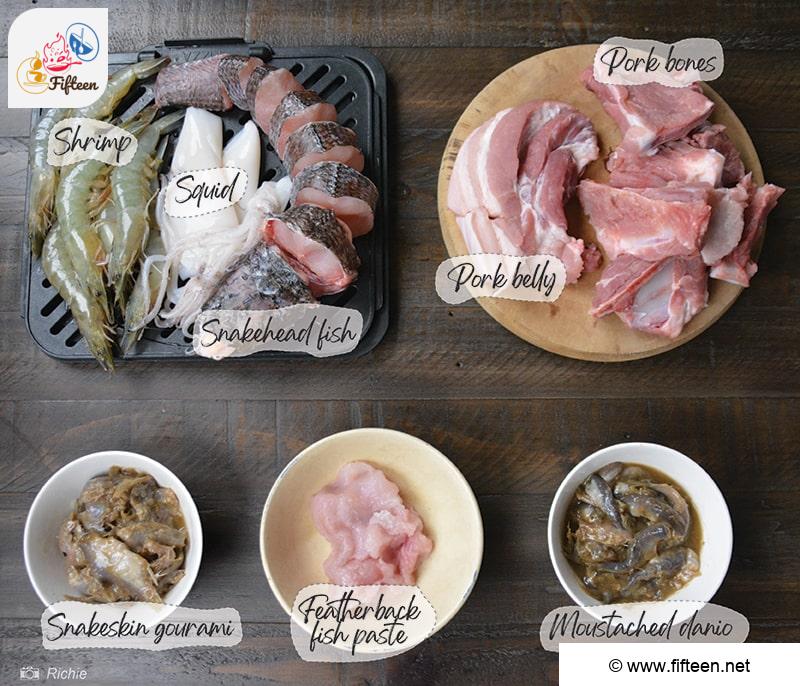
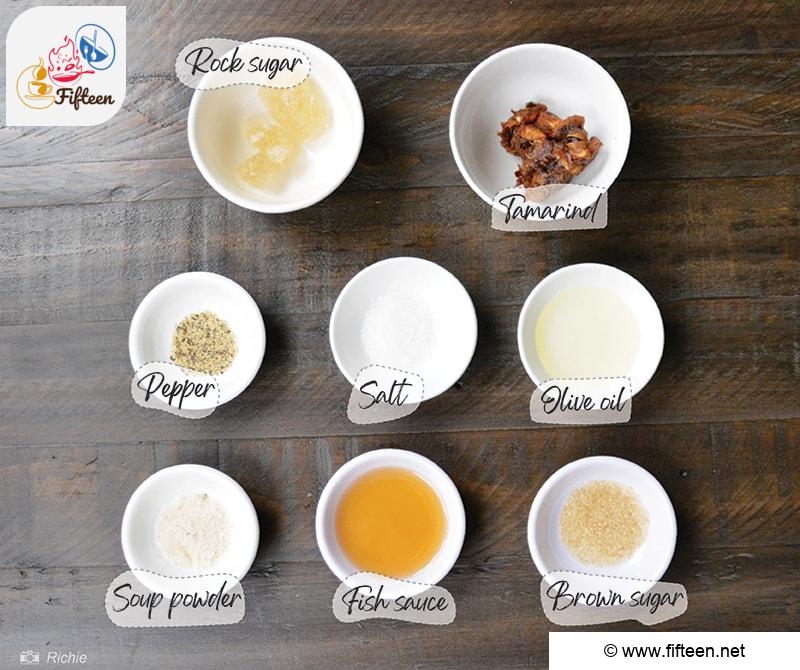
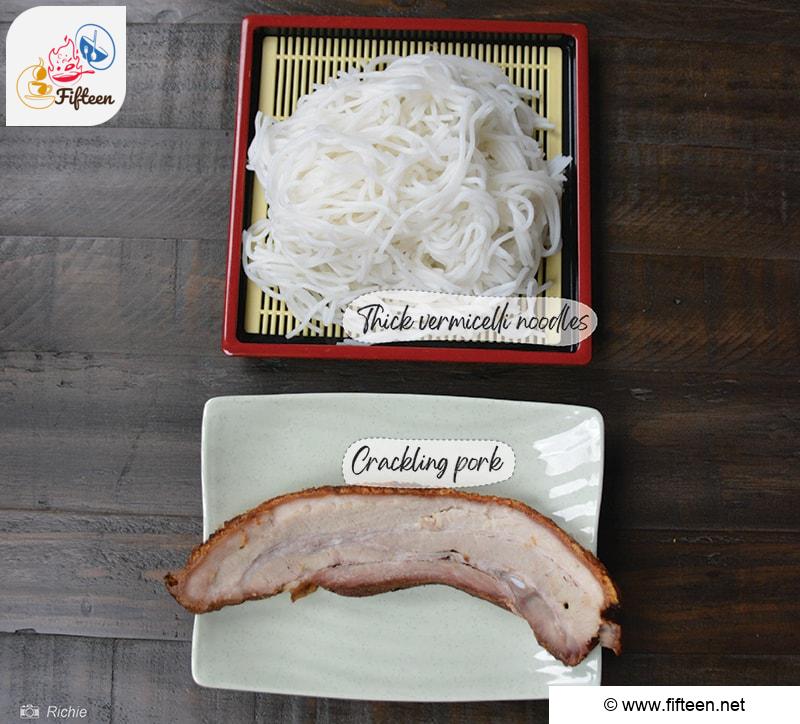
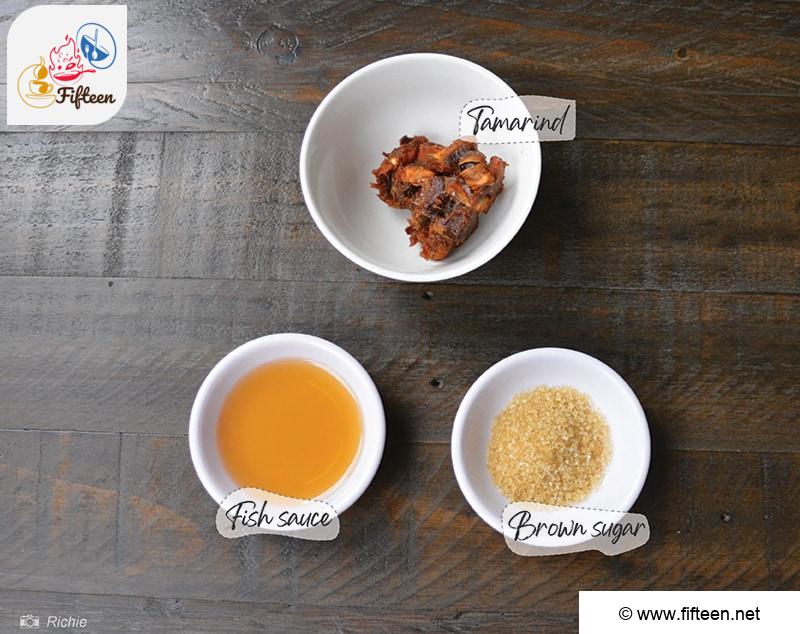
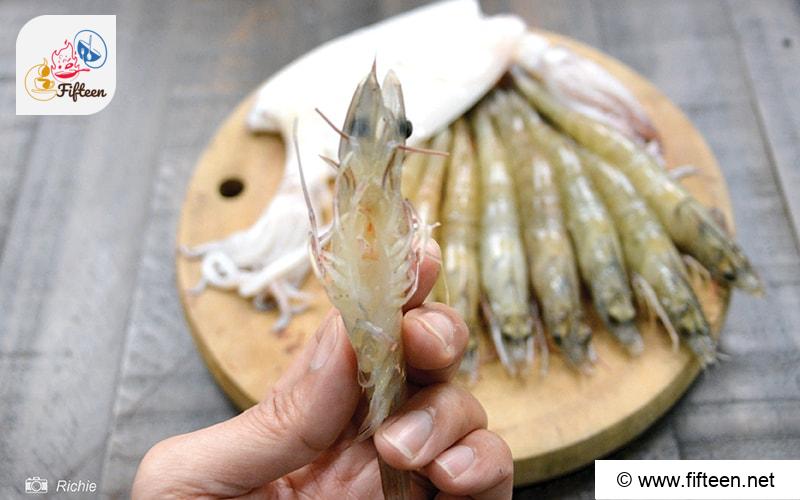
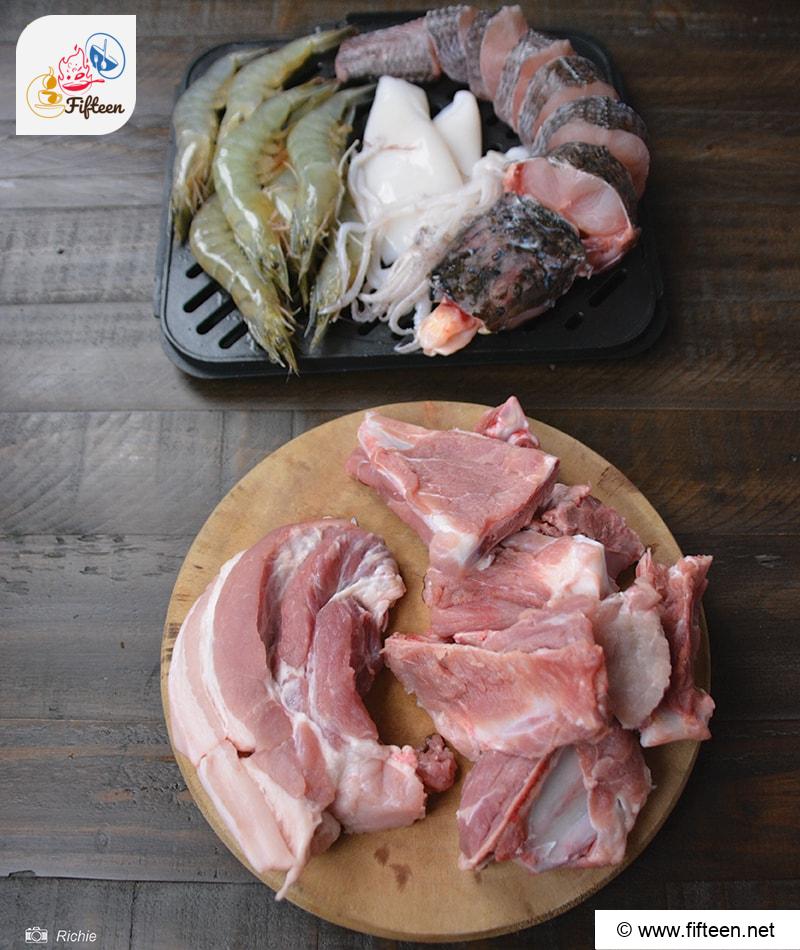
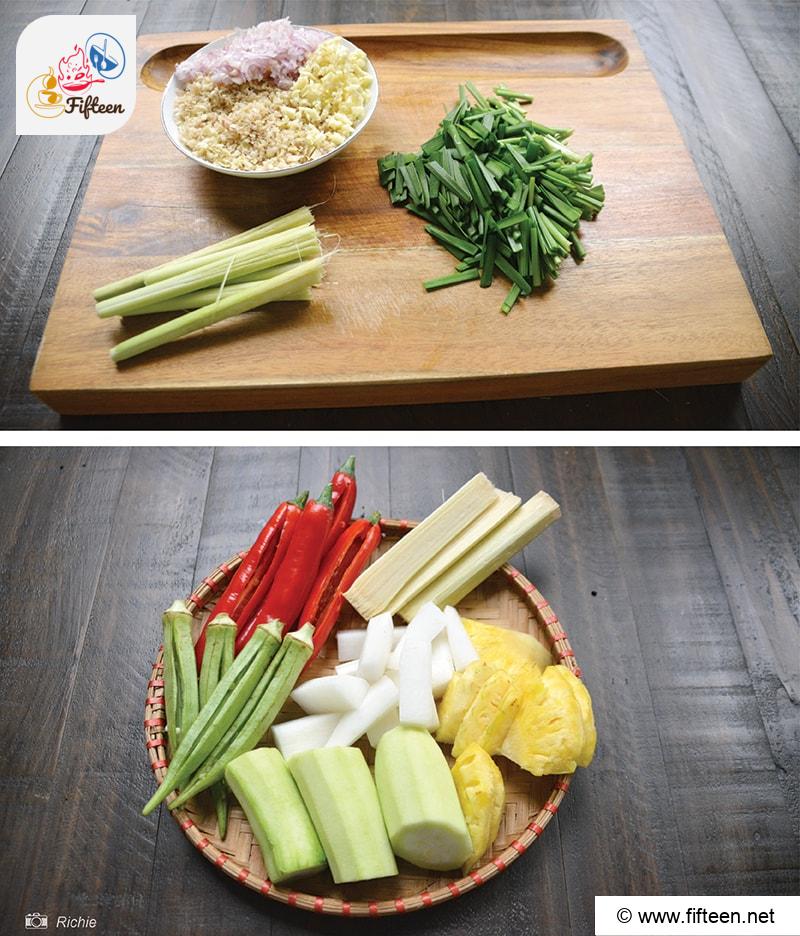
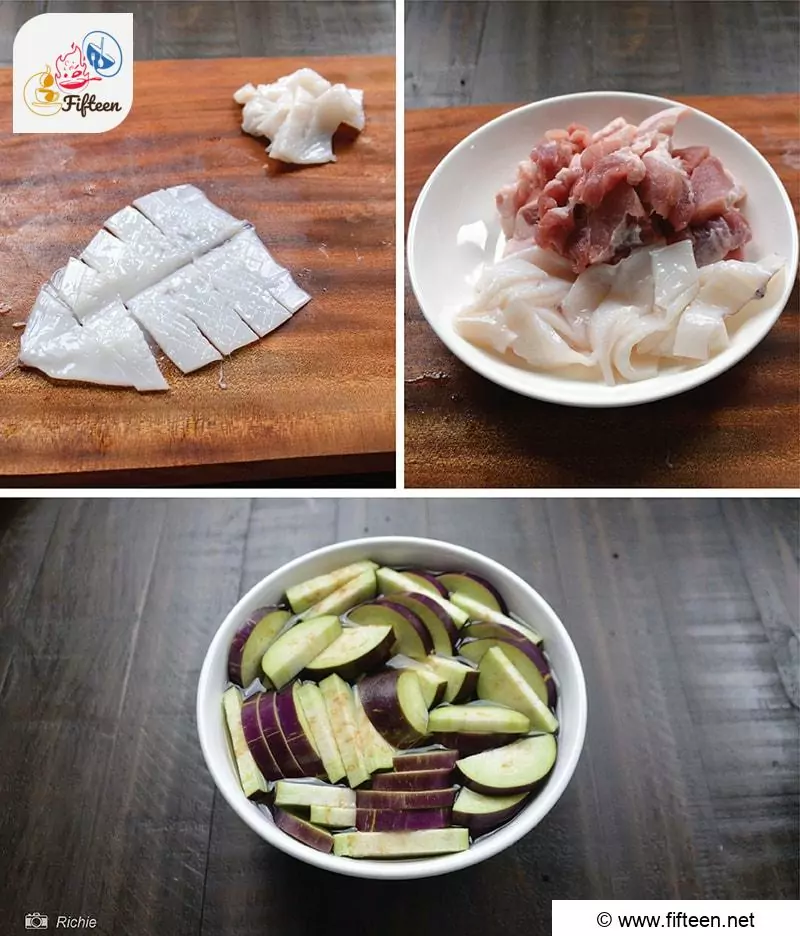
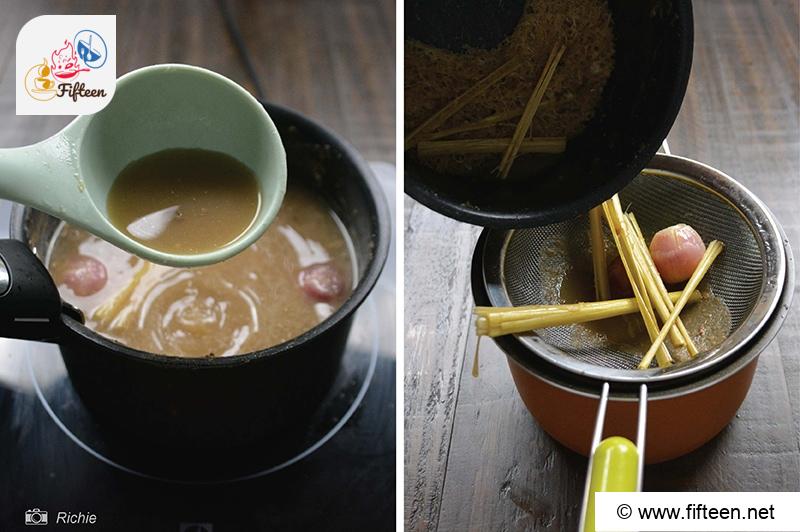
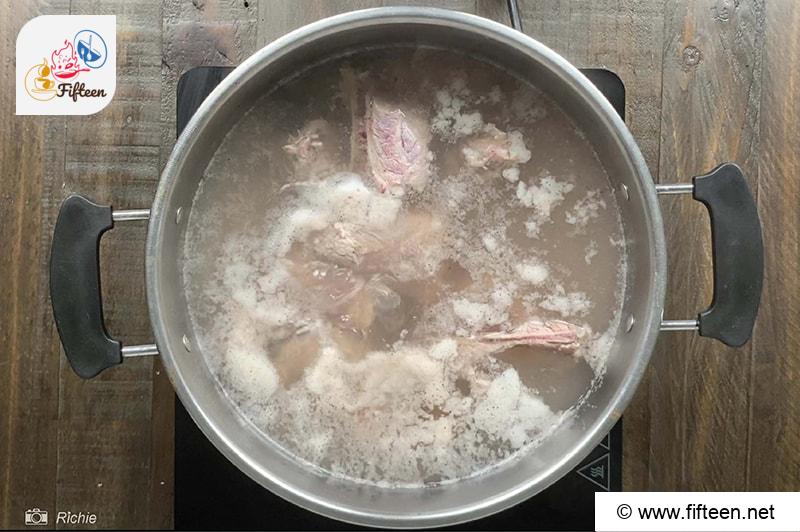
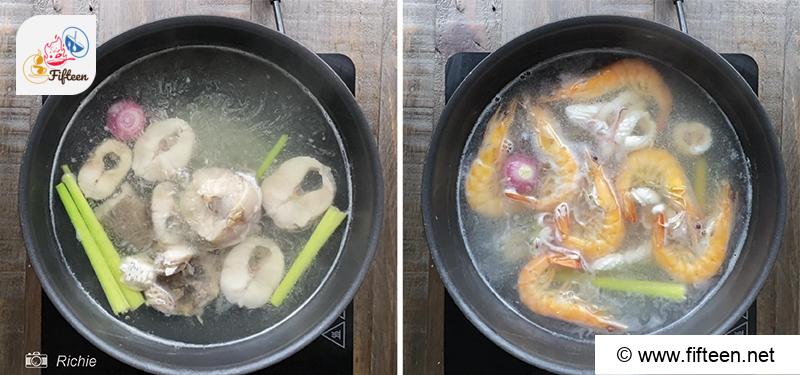
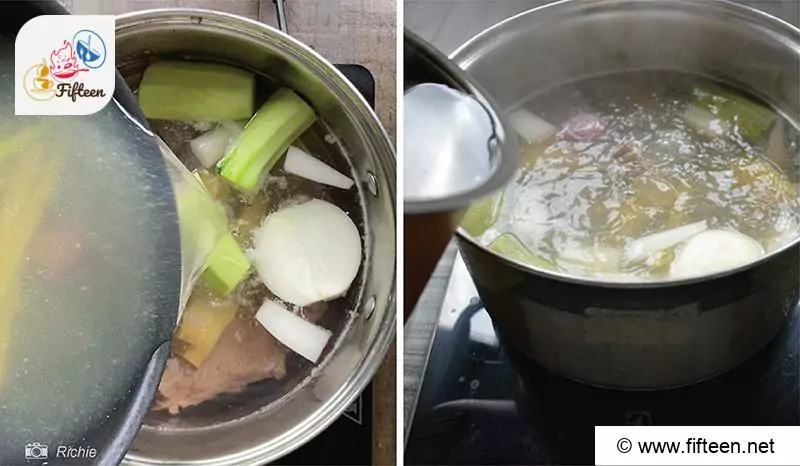
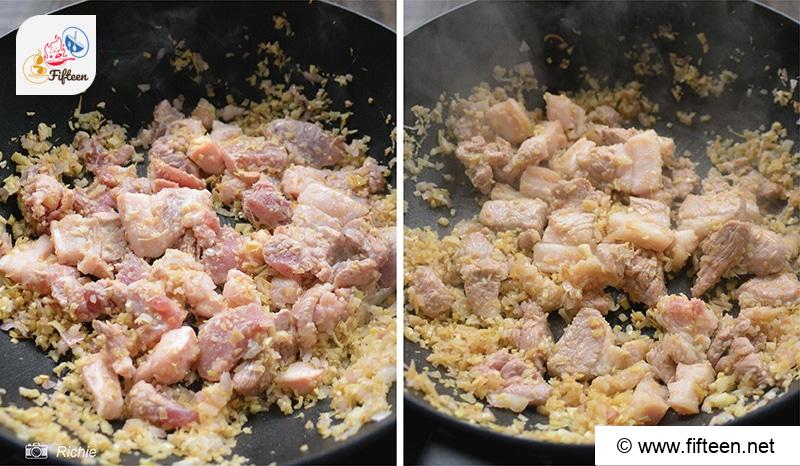
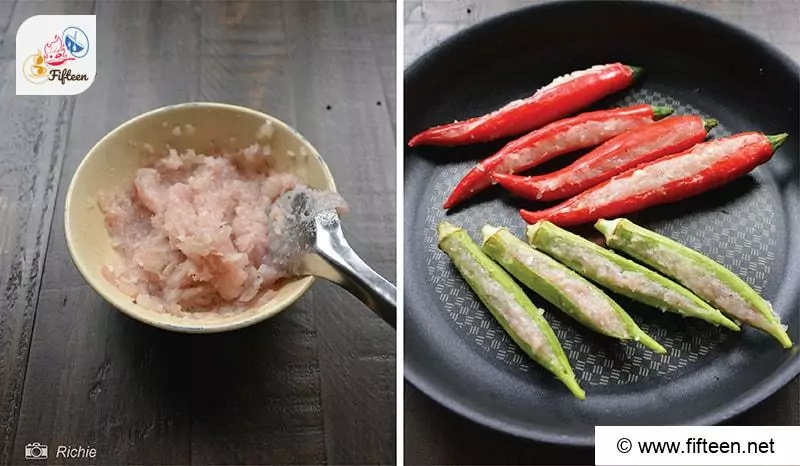
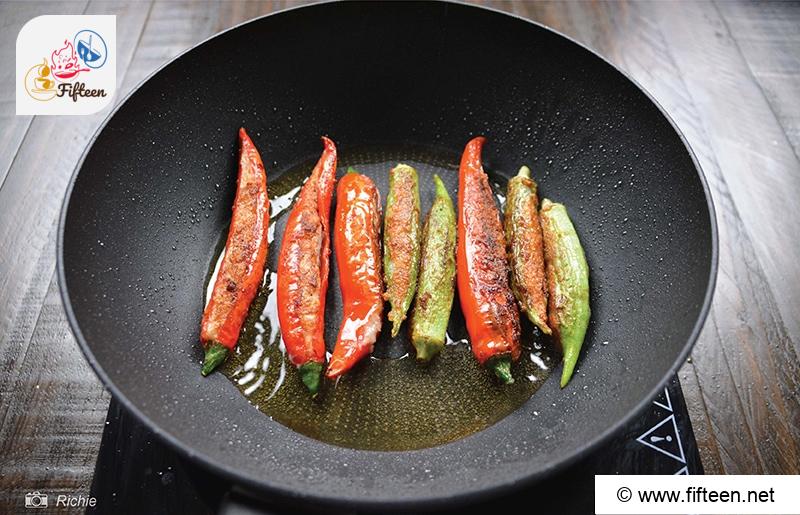
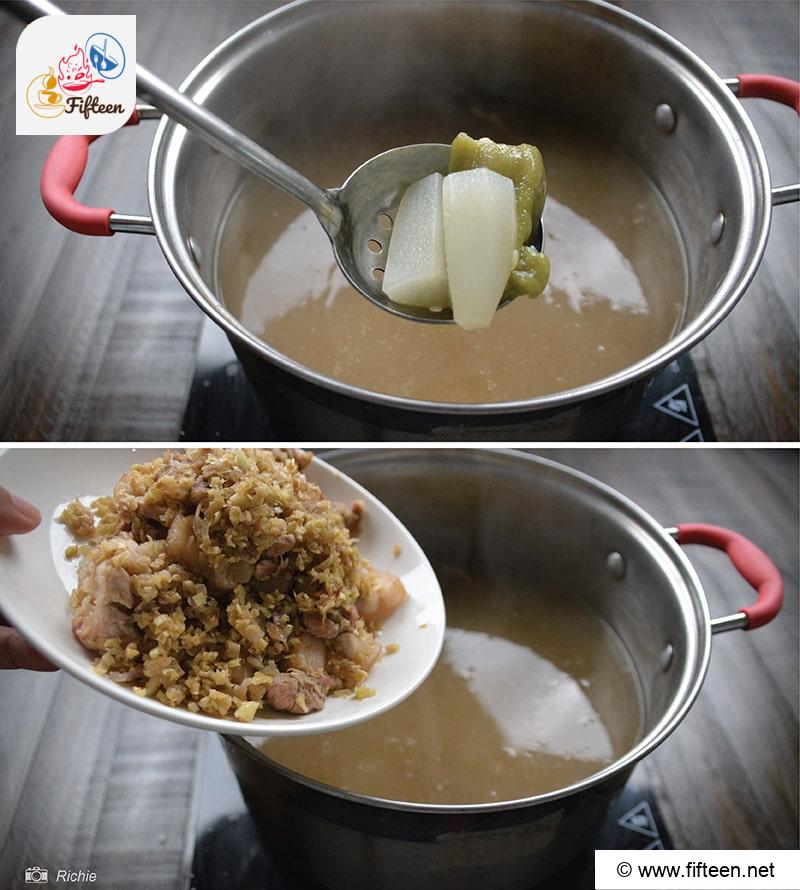
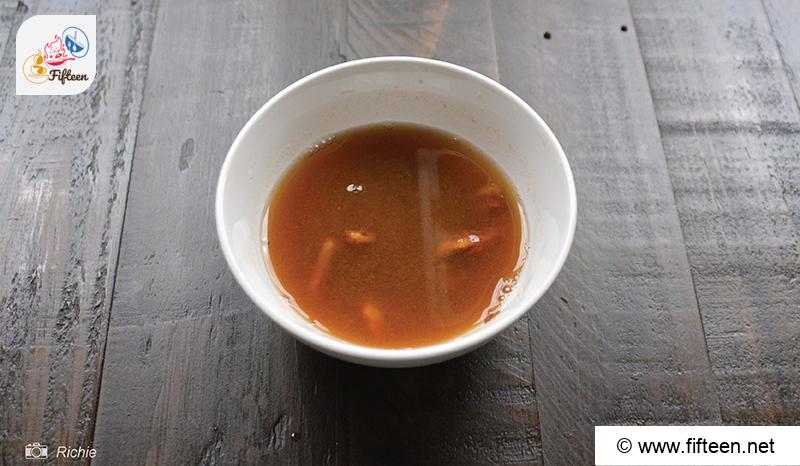
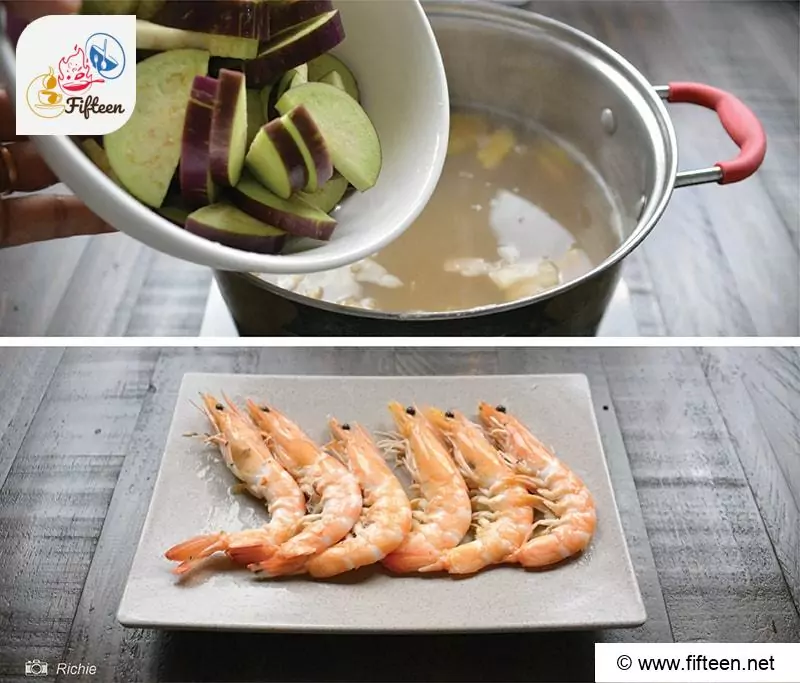
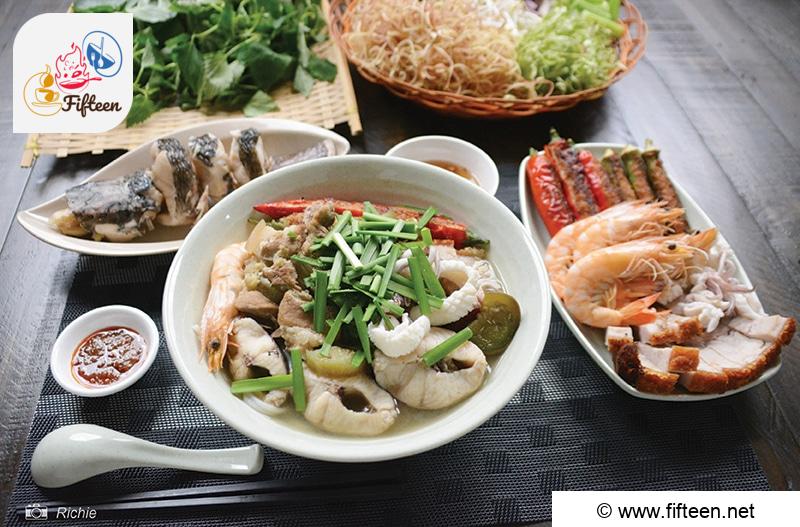
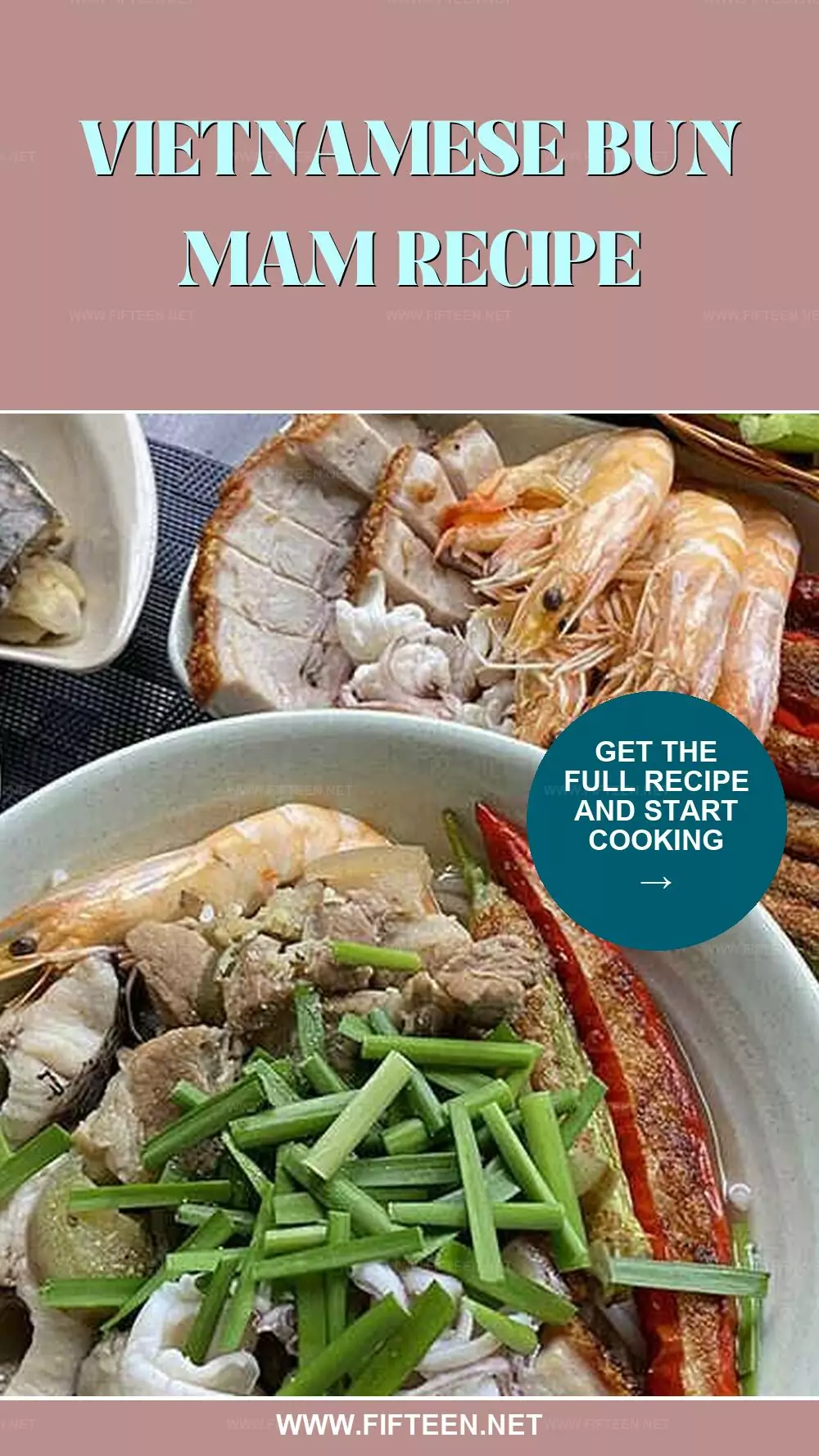
Richie
Content Writer
Expertise
Home Cooking, Meal Planning, Food Styling, Food Photography, Cooking-video Maker, Beverage Evaluation Expert
Education
Saigon Culinary Arts Centre, Ho Chi Minh City, Vietnam
Vietnam Australia Vocational School (VAAC), Hanoi, Vietnam
Richie, based in Ho Chi Minh City, Vietnam, is a dynamic Content Writer with a talent for capturing the essence of culinary art.
Richie specializes in creating visually appealing and tasty content, offering a new angle on Vietnamese and other culinary traditions. With a background in graphic design and a love for food styling and photography, he expertly combines beauty with food narratives, encouraging his audience to discover the culinary world through his imaginative perspective.